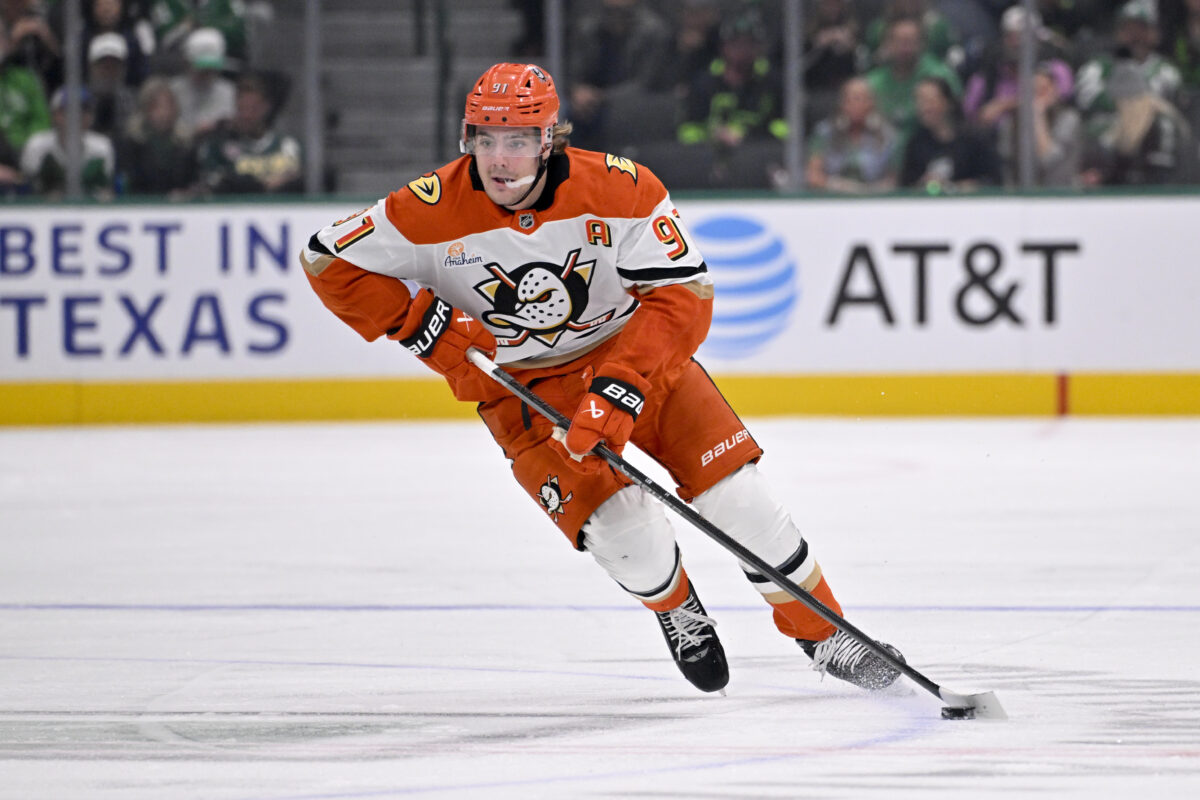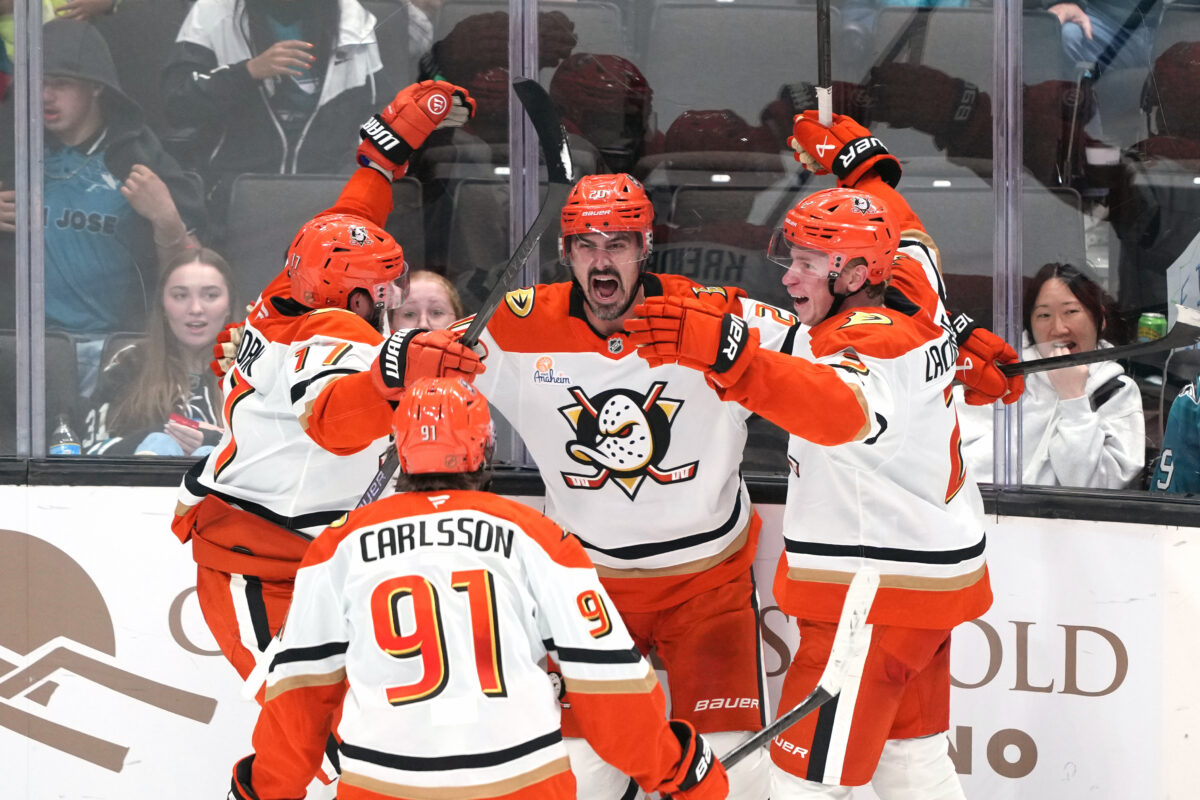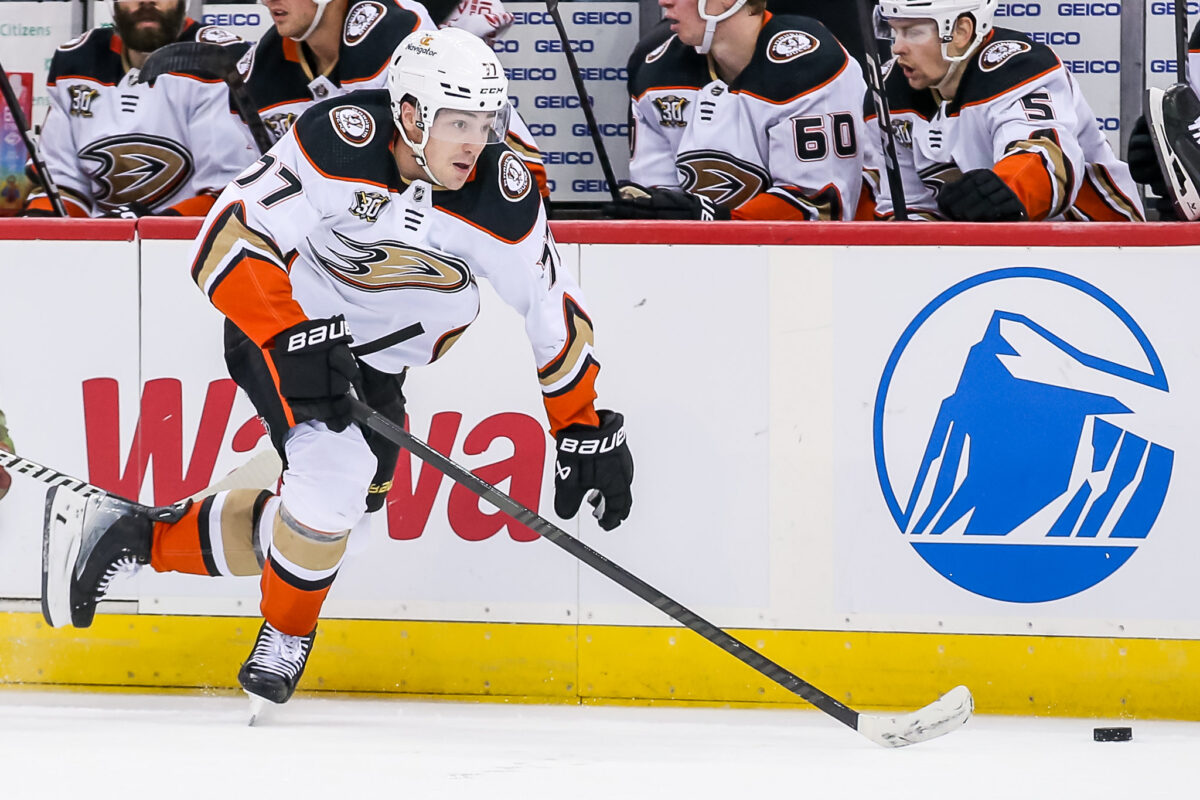When the puck dropped on the 2025-26 NHL season, the consensus around the Anaheim Ducks was cautious optimism at best. Most projections had them pushing for a wild card spot, a respectable step forward in a long rebuild. However, as we hit the quarter-season mark, the reality on the ice has shattered those modest predictions.
Sitting at 14-7-1 with 29 points through 22 games, the Ducks aren’t just in the mix; they are sitting atop the Pacific Division.
According to MoneyPuck, the Ducks now hold an 82.9% chance of making the postseason. If they maintain anything close to this point pace, playoff hockey returns to Orange County. But to understand how this happened, we have to look at the bench, the blue paint, and a front office that might finally be vindicated.
The Quenneville Paradigm Shift
The most significant variable in this equation is the arrival of head coach Joel Quenneville. The transition from the Greg Cronin era to Quenneville has been nothing short of transformative.
Gone are the rigid, low-event “dump and chase” days that frustrated the fanbase and stifled creativity. Quenneville and his staff have implemented a system that emphasizes fluidity and possession. It is a modern style that plays directly to the strengths of a roster overflowing with high-end skill.
Related – Each Pacific Team’s Most Concerning Stat So Far
Critically, the coaching staff has adopted a philosophy of “controlled freedom.” Young skaters are permitted to play through mistakes rather than fearing an immediate benching. This psychological shift has allowed the young core to breathe, resulting in a product that is not only winning but is arguably the most exciting hockey played in Anaheim in a decade.
The Core Arrives: Carlsson, Gauthier, and the “Calder” Surprise
The gamble on youth is paying dividends. Leo Carlsson has officially arrived as the legitimate number-one center the franchise envisioned on draft day. With 11 goals and 18 assists for 29 points, he is driving the bus offensively.

On his wing, Cutter Gauthier is proving that the high-profile trade involving Ivan Provorov was a win for Anaheim. In his second full campaign, Gauthier has racked up 13 goals and 13 assists. He is shooting with confidence and finding soft ice with regularity.
However, the biggest storyline in the forward group is Beckett Sennecke. Projected by many to start the year in the American Hockey League (AHL) or play sheltered minutes, Sennecke has forced his way into the top six. Playing alongside Mason McTavish and Gauthier, he has flourished, recording 16 points (seven goals, nine assists) while averaging over 16 minutes a night. He has solidified his roster spot and currently holds the third-best odds for the Calder Trophy.
On the back end, Olen Zellweger is evolving into a genuine top-four defenseman. Averaging 18:58 of ice time, he is moving the puck efficiently and contributing to the transition game that Quenneville prizes.
Vindication for Verbeek: The “Rangers West” Experiment
General Manager Pat Verbeek faced significant heat this offseason for acquiring aging veterans, specifically from the New York Rangers. Critics argued these moves would block the youth. Verbeek argued they would insulate them. At the quarter mark, Verbeek looks correct.
Chris Kreider has found the Fountain of Youth. With 15 points, including 10 goals, he has been a force at the net front on the power play and a stabilizing presence on the top line. Similarly, Jacob Trouba has silenced many doubters. While his contract remains heavy, his on-ice performance has been solid. Tallied for 13 points and averaging a massive 22:43 of ice time, Trouba is eating the difficult defensive minutes that would otherwise crush a rookie like Zellweger.

These veterans were at a crossroads in New York; in Anaheim, they have been reinvigorated, providing the necessary ballast for a young lineup to operate.
The Clouds on the Horizon: Mintyukov and the Trade Request
Despite the rosy record, it is not all sunshine in Southern California. There are internal fractures that management must address.
The most glaring issue is the situation involving defenseman Pavel Mintyukov. In what counts as the season’s biggest negative surprise, Mintyukov has regressed significantly. Following the return of Radko Gudas, Mintyukov has found himself as a healthy scratch, surpassed on the depth chart by Ian Moore.
Related – Ducks News & Rumors: Last-Minute Win, Strome and Gudas Return, and Mintyukov’s Predicament
With only three points in 19 games and his ice time dwindling, the relationship has reportedly soured. Elliotte Friedman has reported that Mintyukov has requested a trade. Moving a young, cost-controlled defenseman is rarely a winning proposition, but if the bridge is burned, Verbeek faces a difficult decision.
Furthermore, Frank Vatrano has become the team’s scapegoat. With only two goals and one assist, his offensive production has fallen off a cliff. His contract is beginning to look like an anchor, and there are genuine concerns that his scoring touch has evaporated.

Additionally, there is the “Zegras Factor.” Watching Trevor Zegras thrive with the Philadelphia Flyers is a blemish on the current front office. It suggests that perhaps the issue wasn’t the player, but the previous environment. One has to wonder what Zegras could have done under a coach like Quenneville.
Sustainability and the Pacific Grind
The Pacific Division is tight. While the Ducks lead, the Vegas Golden Knights remain the favorites, and the Los Angeles Kings are projected to finish in the top three. The Edmonton Oilers, despite a slow start, are inevitable; they will be knocking on the door soon.
Former goaltender and analyst Carter Hutton recently noted a fear of “burnout” for the Ducks. The concern is valid. Anaheim is sprinting while the veteran teams behind them are pacing themselves for a marathon. The Ducks’ penalty kill also remains a weakness, often prioritizing shorthanded offense over structural defense — a habit that savvy veteran teams will exploit as the season grinds on.
The Verdict
The Ducks are in a position far superior to what anyone anticipated. This is a “changing of the guard” moment, where the rebuild is officially bearing fruit.
However, they are like a marathon runner who surged to an early lead. They have surprised the field with their pace and internal strength, but the experienced runners—Vegas, Edmonton, LA—are right on their heels.
As the trade deadline approaches, Verbeek faces a fascinating strategic choice. Does he push his chips in, adding reinforcements to solidify this playoff spot? Or does he sit back, trust the process, and prioritize the development of the core, knowing that even a competitive miss is a step forward?
For the first time in years, the Ducks are playing meaningful hockey in November. The question now is whether they will still be playing meaningful hockey in April.
AI tools were used to support the creation or distribution of this content, however, it has been carefully edited and fact-checked by a member of The Hockey Writers editorial team. For more information on our use of AI, please visit our Editorial Standards page.
